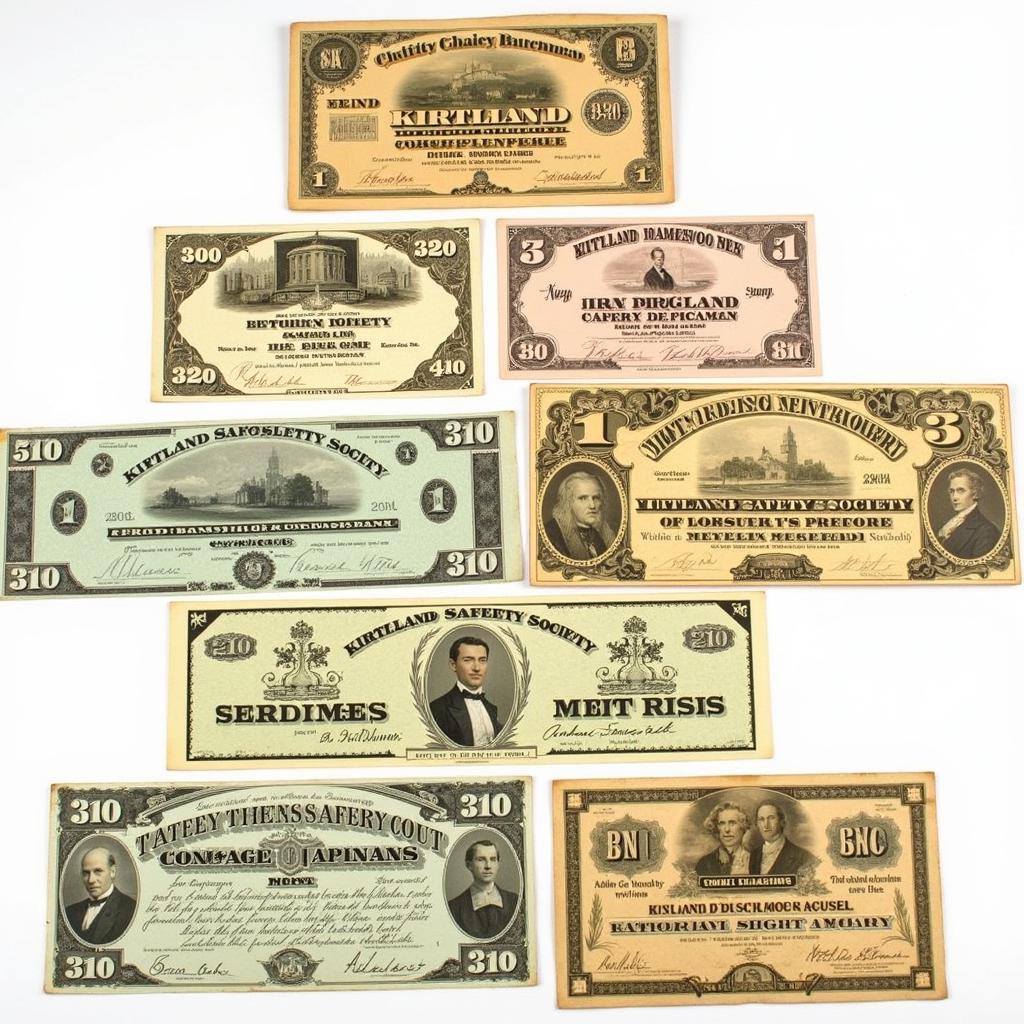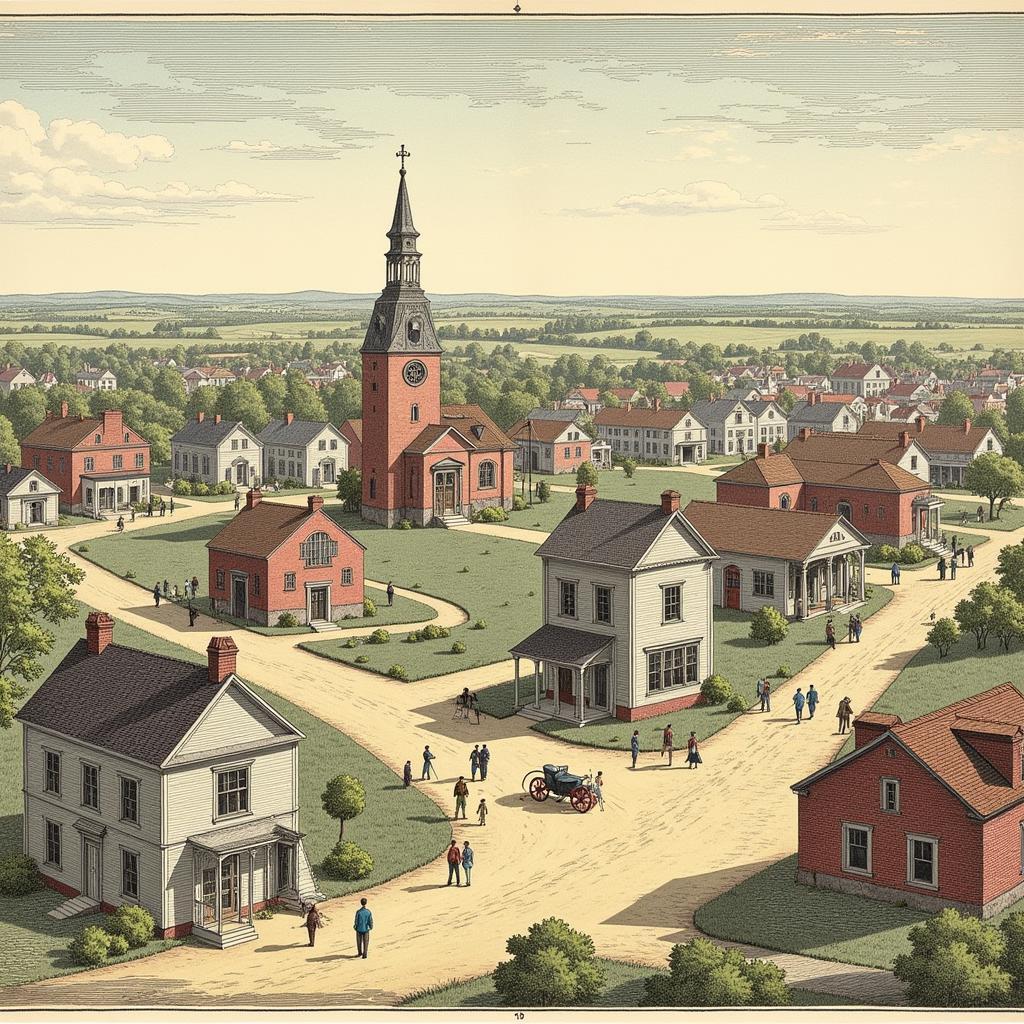The Kirtland Safety Society Bank Note represents a fascinating chapter in American history, intertwined with religious fervor, economic experimentation, and ultimately, legal challenges. These notes, issued in the early 1830s, offer a unique window into the aspirations and struggles of the early Mormon community in Kirtland, Ohio.
The Genesis of the Kirtland Safety Society Bank Note
The Kirtland Safety Society was established in 1837 by Joseph Smith, the founder of the Church of Jesus Christ of Latter-day Saints, and other church leaders. The primary aim of the society, despite its name, was to function as a bank. The idea was to provide financial stability and support for the burgeoning Mormon community, which faced economic hardship. The society issued its own currency, the Kirtland Safety Society bank note, in denominations ranging from one to five dollars. These notes were intended to be used for local transactions and bolster the local economy.
The notes themselves are quite intricate, featuring elaborate engravings and various symbols. They often depicted agricultural scenes, reflecting the agrarian ideals of the community. The design of the Kirtland Safety Society bank note aimed to inspire confidence and project an image of stability, crucial for any nascent financial institution.
Challenges and the Demise of the Kirtland Safety Society
The Kirtland Safety Society faced numerous challenges from its inception. Lack of sufficient capital, internal disagreements, and external pressures from a national financial crisis, known as the Panic of 1837, contributed to its downfall. The Ohio legislature had also not granted the society a formal banking charter, operating on what was essentially a legal gray area. This lack of official recognition made the Kirtland Safety Society bank note vulnerable to speculation and distrust.
Public confidence in the bank note waned as the economic climate worsened. The notes began to depreciate rapidly, causing significant financial losses for many who held them. Within a year of its founding, the Kirtland Safety Society ceased operations, leaving behind a legacy of economic hardship and legal battles.
The Kirtland Safety Society Bank Note Today: A Collector’s Item
While the Kirtland Safety Society bank note represents a period of economic instability, it holds significant historical value today. These notes are sought-after collector’s items, offering a tangible link to a pivotal period in the history of the Latter-day Saint movement. Their rarity and historical significance contribute to their value among numismatists and history enthusiasts.
 Collection of Kirtland Safety Society Bank Notes
Collection of Kirtland Safety Society Bank Notes
What was the purpose of the Kirtland Safety Society?
The Kirtland Safety Society was intended to function as a bank, providing financial stability for the early Mormon community in Kirtland, Ohio.
Why did the Kirtland Safety Society fail?
The Kirtland Safety Society failed due to a combination of factors, including insufficient capital, internal disagreements, the Panic of 1837, and the lack of a formal banking charter.
What happened to the Kirtland Safety Society bank notes?
The Kirtland Safety Society bank notes depreciated rapidly after the society’s collapse, causing financial losses for many. Today, they are valuable collector’s items.
“The Kirtland Safety Society bank note serves as a reminder of the economic challenges faced by early Mormon communities and the complex interplay between faith and finance.” – Dr. Emily Carter, Historian specializing in 19th-century American religious movements.
 Kirtland, Ohio in the 1830s
Kirtland, Ohio in the 1830s
“Collecting these notes allows us to connect with the past and understand the economic realities of a unique historical moment.” – Mr. James Thompson, Numismatist and expert on early American currency.
In conclusion, the Kirtland Safety Society bank note represents a complex and intriguing episode in American history. While its economic impact was ultimately negative, its historical significance remains. These notes serve as a tangible reminder of the aspirations and struggles of the early Mormon community in Kirtland and the challenges they faced in establishing financial stability. Understanding the history of the Kirtland Safety Society bank note provides valuable insights into the intersection of religion, economics, and community development in 19th-century America.
FAQ
- Are Kirtland Safety Society bank notes still legal tender? No.
- Where can I find Kirtland Safety Society bank notes for sale? Reputable auction houses and antique dealers specializing in numismatics.
- How can I determine the value of a Kirtland Safety Society bank note? Consult a professional numismatist.
- What are some other examples of private currency issued in the 19th century? There were numerous examples, often issued by local banks or businesses.
- What role did Joseph Smith play in the Kirtland Safety Society? He was one of the founders.
- What was the impact of the Panic of 1837 on the Kirtland Safety Society? It contributed significantly to the society’s failure.
- What is the historical significance of the Kirtland Safety Society? It provides insights into the early history of the Latter-day Saint movement and the economic challenges of the time.
For further assistance, please contact us at Phone: 02043854663, Email: [email protected] or visit our address: Khu 34, Bac Giang, 260000, Vietnam. We have a 24/7 customer service team.